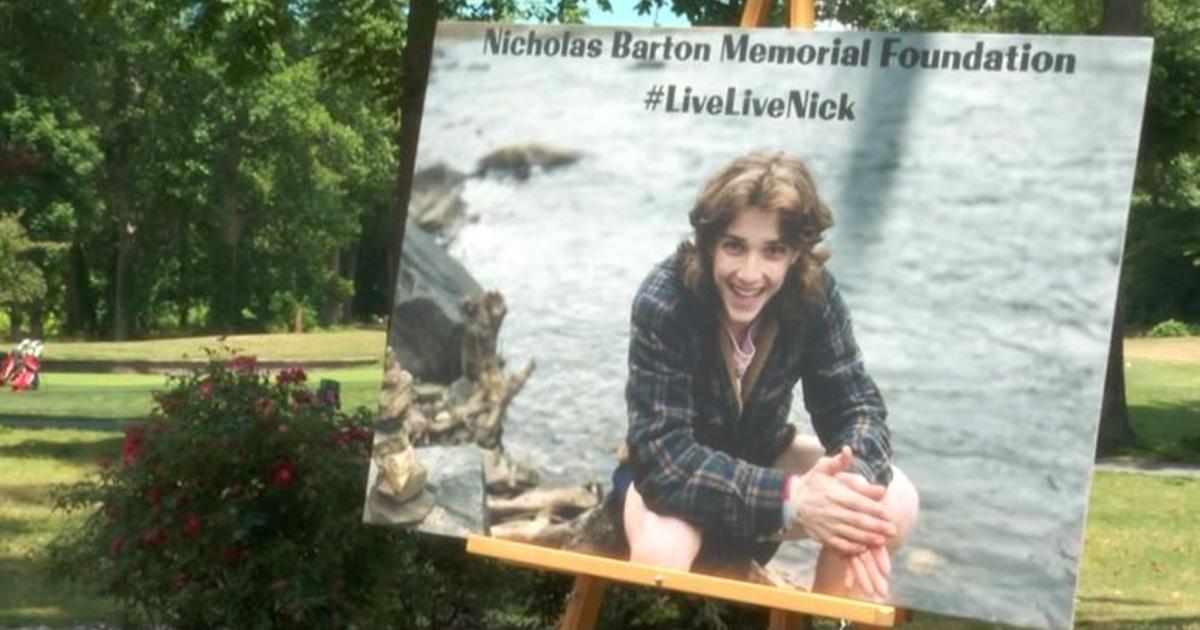Rare Stone Slave Quarters Unearthed At Belvoir
By E.B. Furgurson III
The Capital
CROWNSVILLE, Md. (AP) -- Janice Hayes-Williams held a shard of a plate at the slave quarters archaeological dig at Belvoir, the site of an 18th-century plantation in Crownsville.
`Oh, my, I found another one," said the historian, an Annapolis resident.
Hayes-Williams was having a fruitful first day volunteering at the dig, carefully scraping and brushing thin layers of earth around a hearth in what was once a 34-by-34-foot structure that housed slaves -- unusually big for slave quarters.
The property, now owned by the Rockbridge Academy, a private Christian school, had been occupied by a cross section of people over the last 300 years -- the landed gentry, indentured servants, slaves, free blacks and soldiers from the Revolution, the War of 1812 and the Civil War.
The dig was originally started to find evidence of French troops commanded by the Comte de Rochambeau thought to have camped there in September 1781, on their way to Yorktown, Virginia, and the final major battle of the Revolutionary War.
Instead, the archaeologists came upon the remains of a stone-walled, brick-floored building that, going from the description in the 1798 tall rolls, was a slave barrack.
As they worked, the archaeologists have uncovered more details -- and raised more questions. They have found evidence pointing to broader themes of Colonial slave life, such as the hierarchy of slave quarters. And research has also uncovered ties between Scott's Plantation, as it was known, and Annapolis.
The original structure apparently contained a kitchen and was used by the slaves serving in the plantation house.
"There was a large front room with a kitchen hearth for cooking, meals and socializing," said Julie Schablitsky, chief archaeologist for the State Highway Administration, which is working on the dig with the county archaeologist.
"In the rear were two rooms, perhaps with bunk beds in one and a family's quarters in another," Schablitsky said.
The large hearth and smaller ones in each of the back rooms were connected to the same chimney.
Dennis Pogue, a historic archaeology consultant and associate professor at the University or Maryland historic preservation program, said there is evidence of a few similar slave buildings in the Mid-Atlantic.
"Thomas Jefferson's notes show plans for a similar layout: a front kitchen with two back rooms for slave quarters," Pogue said. "Some others were similar," but were a combined "quarters and laundry, all serving the functions of the plantation house."
The building at Belvoir was close to the plantation house, and so probably used to prepare food for it. Artifacts uncovered include silver buttons, which would have been worn with the finest clothes -- reinforcing the theory house servants occupied the building.
"There was a hierarchy of slave quarters, from larger, well-constructed structures for the house slaves to log and frame structures for the field hands," Pogue said.
The 1798 tax roll also shows a log structure, about 20-by-32 feet, that likely housed field laborers.
Tax records from other Maryland plantations show similar "negro barracks." Another mid-19th Century document has a detailed description of two barracks constructed on a plantation in West River owned by Virgil Maxy -- two-story 34-by-34-foot dormitory-style buildings with bays for bunks and for individual families.
Hayes-Williams' research has found that the plantation's owners also kept houses in Annapolis.
"Some were on the Annapolis City Council," she said. "Slaves go where their owners go. So there were connections from here to Annapolis, Annapolis to here, and back and forth.
"I have found several slave women who came from plantations who married free men from Annapolis to get out of this mess," Hayes-Williams said. "If a country girl comes to Annapolis and finds a free black man, she will set her sights on him. That is how she got out of here."
Schablitsky, who hopes to develop a Belvoir exhibition, said the crews will next turn to a large field below the manor home used by the Rockbridge Academy.
"We dug test pits and found all sorts of artifacts, many military items." she said.
There, they could finally locate the Rochambeau encampment -- and other answers to over 300 years of questions.
Two stories -- one sad, the other hopeful -- backed by documentary research by Janice Hayes-Williams are related to African-American lives changed at Belvoir.
Cinderella was a slave born in 1824 who came to know and marry a free black man named Abraham Brogden.
Her master was Brice Worthington, owner of the plantation overlooking the Severn River. He died and his son, George, took over the land and slaves. Rumor had it he was about to sell off slaves to settle his debts.
Abraham and Cinderella were warned of the impending sale by Thomas Marriott, a white man who helped them arrange an escape to Baltimore.
"But they were caught before the runaway slave ad even hit the paper," Hayes-Williams said.
Cinderella was sent back to Belvoir. Brogden was convicted of aiding and abetting a runaway slave and thrown in prison.
Marriott stirred up many of his white neighbors in Annapolis, who wrote the governor about the apparent injustice of Brogden's sentence.
The governor eventually pardoned Brogden.
"But before he was released, Cinderella died a mysterious death on the plantation," Hayes-Williams said.
Ellen Burley was another slave at Belvoir, also owned by Brice Worthington. Her father, Thomas Burley, was a free black who worked at a glass factory in Frederick.
Over the years he saved enough money to purchase his wife, Ann, and his daughter Ellen from Worthington.
A few years afterward, on March 3, 1854, Thomas Burley filed manumission papers for his wife; for his daughter Ellen, who had since married a free man named George Smith; and for her seven children.
With those legal papers, they were forever free, and could prove it.
"You had to have those papers," Hayes-Williams said. "Ellen needed those papers so she could walk around freely. If you were off the plantation with no papers, you were a runaway."
Ellen Burley Smith was apparently arrested more than once for enticing slaves to run away. But there is no evidence she was ever convicted.
Hayes-Williams said that was because of the curious relationships among slaves, former slaves and their masters -- and their masters' social and political positions in the county and city.
"She might have continued to work for the Worthington household in Annapolis," Hayes-Williams said. "They only lived around the corner from each other."
The Smiths lived around Acton Landing; the Worthington house in town was on nearby Franklin Street.
"People like the Worthingtons did not want it known that one of their slaves (or former slaves) was stirring up trouble," Hayes-Williams said.
(Copyright 2015 by The Associated Press. All Rights Reserved.)



